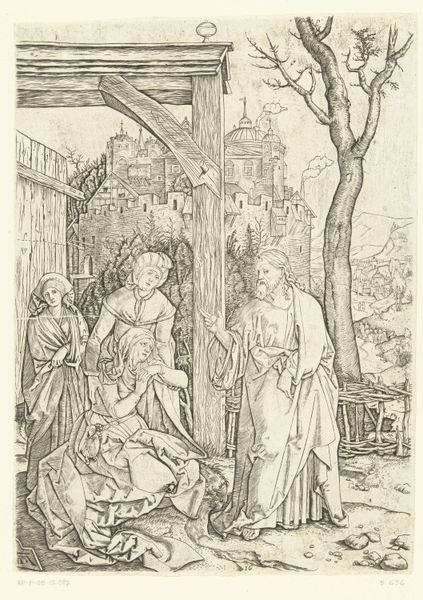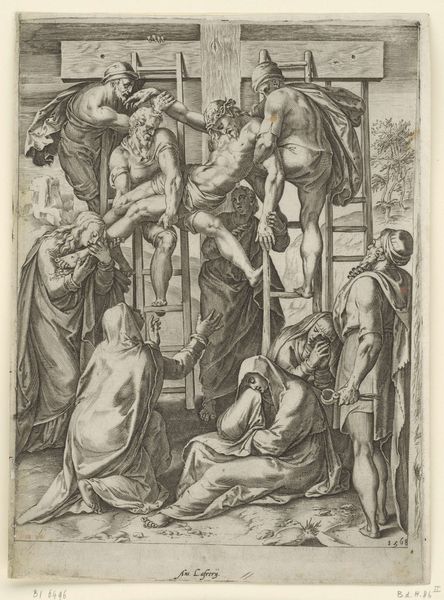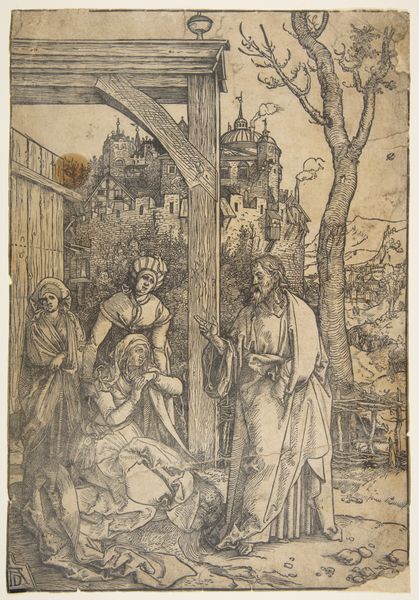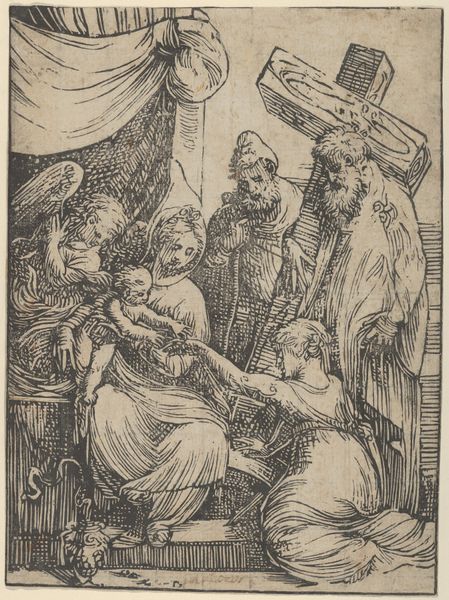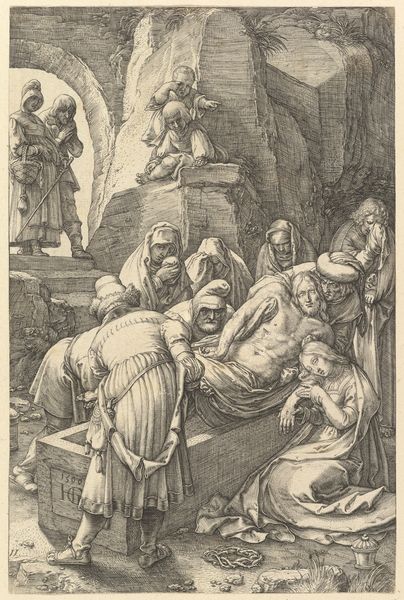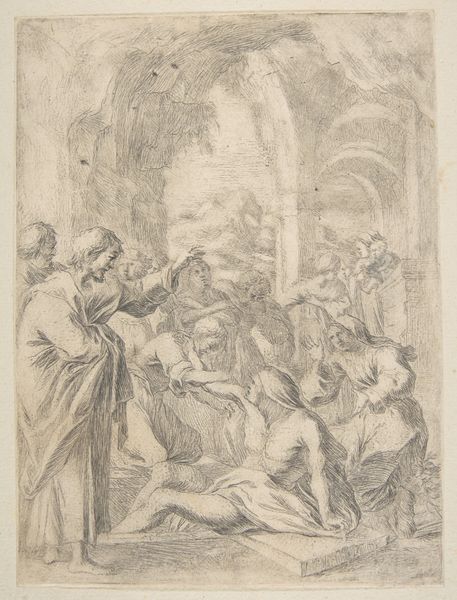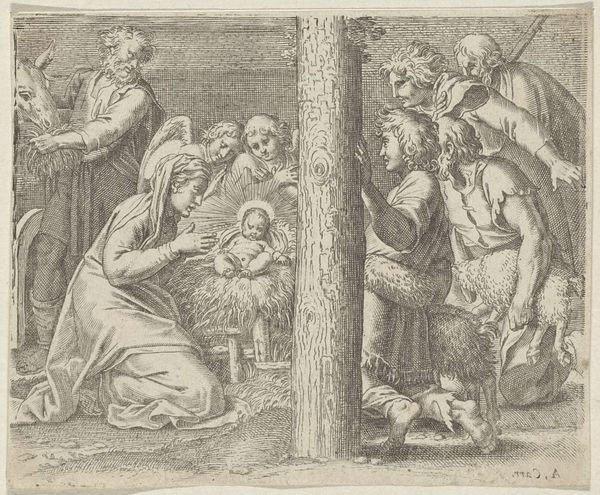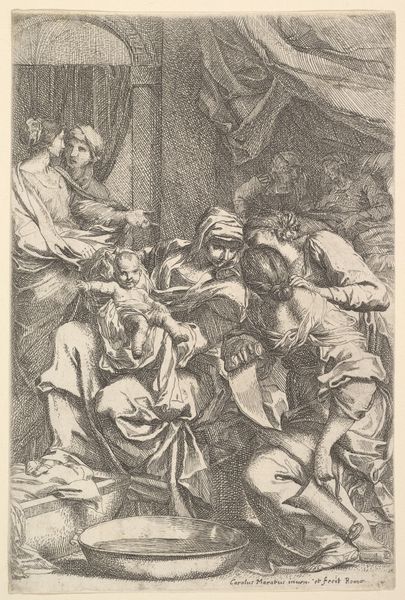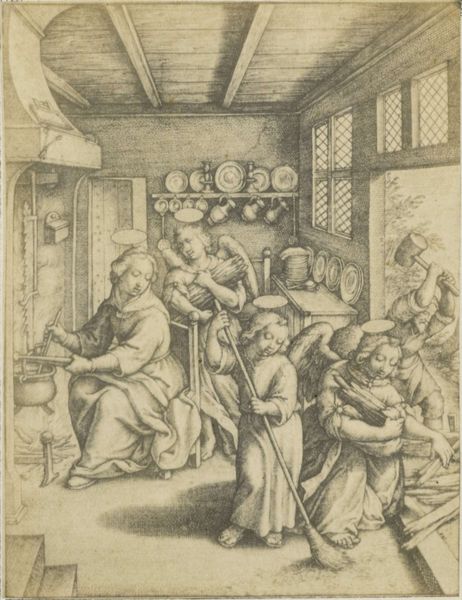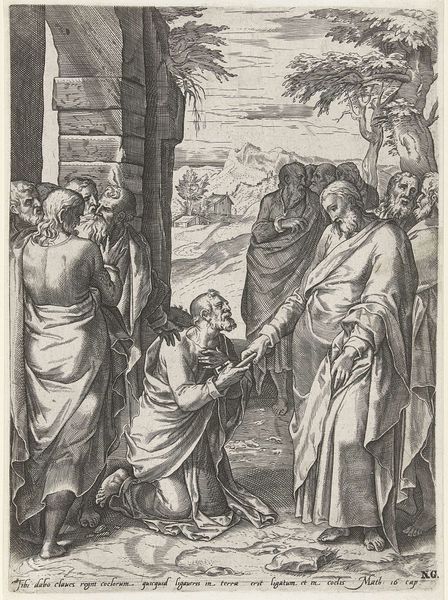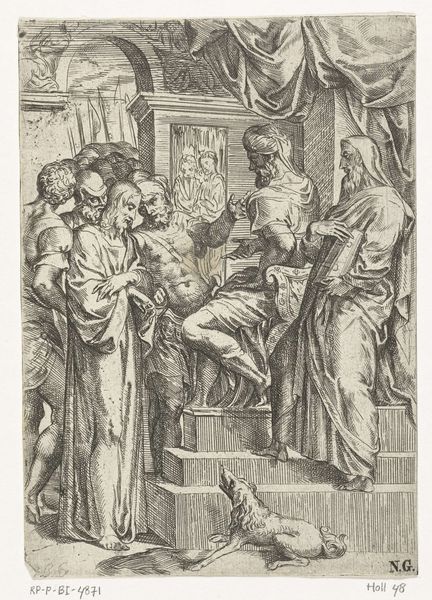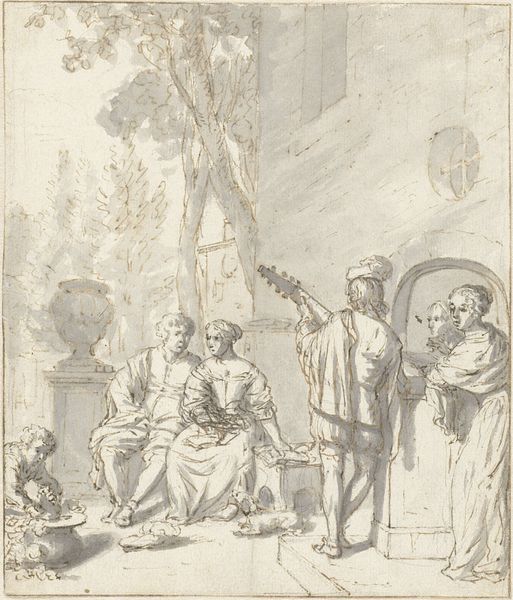
drawing, print, paper, ink
#
drawing
#
ink drawing
#
narrative-art
# print
#
pen sketch
#
figuration
#
paper
#
11_renaissance
#
ink
#
history-painting
#
italian-renaissance
Dimensions: 11 5/16 x 9 in. (28.7 x 22.8 cm)
Copyright: Public Domain
Curator: Ah, here we have an anonymous 16th-century drawing, “Adoration of the Magi,” currently residing at The Metropolitan Museum of Art. It's rendered in ink on paper. Editor: It feels remarkably unfinished, almost skeletal in its linework, but there's an undeniable energy. The washes of ink give it surprising depth despite the sketch-like quality. I find myself drawn to the almost frantic, chaotic, energy within this small print. Curator: Yes, the hasty execution lends it a unique charm. Consider that during the Renaissance, prints such as this drawing facilitated the rapid dissemination of artistic ideas across Europe. An artist or workshop would have quickly sketched the central New Testament scene for later distribution as devotional material. Editor: The texture of the paper becomes critical here, doesn't it? It’s not just a surface but an active participant in how the ink settles and forms these figures. Look closely at the robes--their folds seem less about depiction and more about the sheer physical action of applying the ink. What kind of labor went into producing such works intended for rapid consumption and distribution? Curator: That’s a crucial point. While unsigned, it shows the workshop system that flourished in Renaissance Europe, fulfilling demands of a growing educated merchant class. This piece allows us to analyze the social fabric that consumed these images as markers of status and knowledge. Editor: So, it wasn’t simply about illustrating a Biblical scene, but participating in a larger visual marketplace. Think about the skill required to quickly convey complex emotions and spatial relationships. The relative affordability meant that even commoners could purchase affordable reproductions of Biblical stories. What that must have done for their world view! Curator: Precisely. Consider this: for many people, these prints were likely the only artwork they encountered regularly. It raises essential questions about the role of art in shaping belief systems and reinforcing social norms. The "Adoration" then is not just devotion, but display, both on the side of the artist and patron. Editor: The scale feels intimate despite the grandness of the subject matter. This image's physicality, its very 'print-ness', becomes a powerful signifier of the era’s evolving relationship with knowledge and craft. I think that it shows the changing dynamic between individual skill and mass production, that existed even at the time of the Italian Renaissance. Curator: Absolutely. This piece showcases the fascinating interplay between art, commerce, and cultural values in the 16th century. It also illustrates that “high art” wasn’t always such a rigid category and instead mingled and interacted with everyday life more freely. Editor: Examining the materiality alongside its history reveals a much more nuanced understanding of its place and function. Thanks for sharing!
Comments
No comments
Be the first to comment and join the conversation on the ultimate creative platform.
